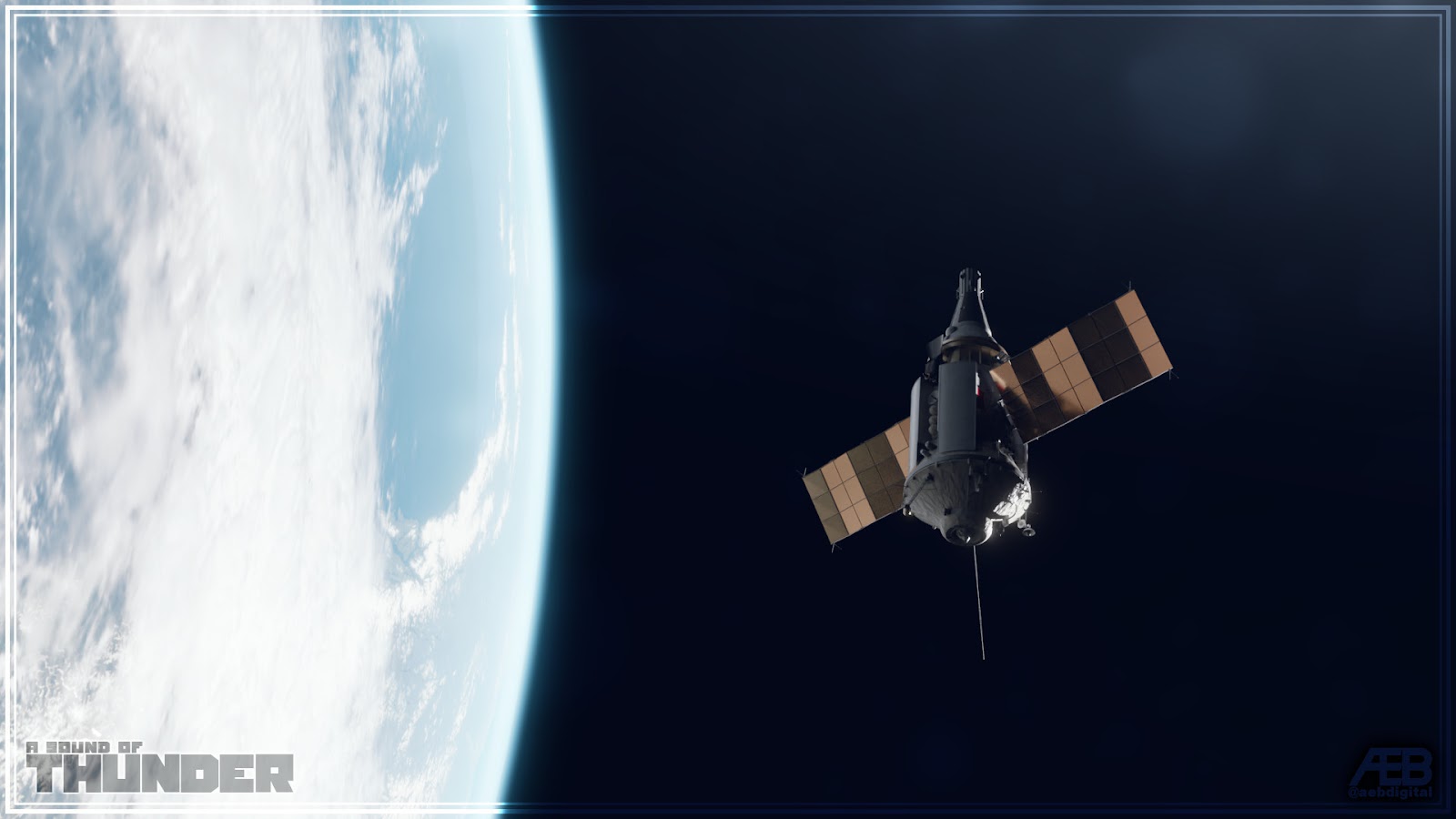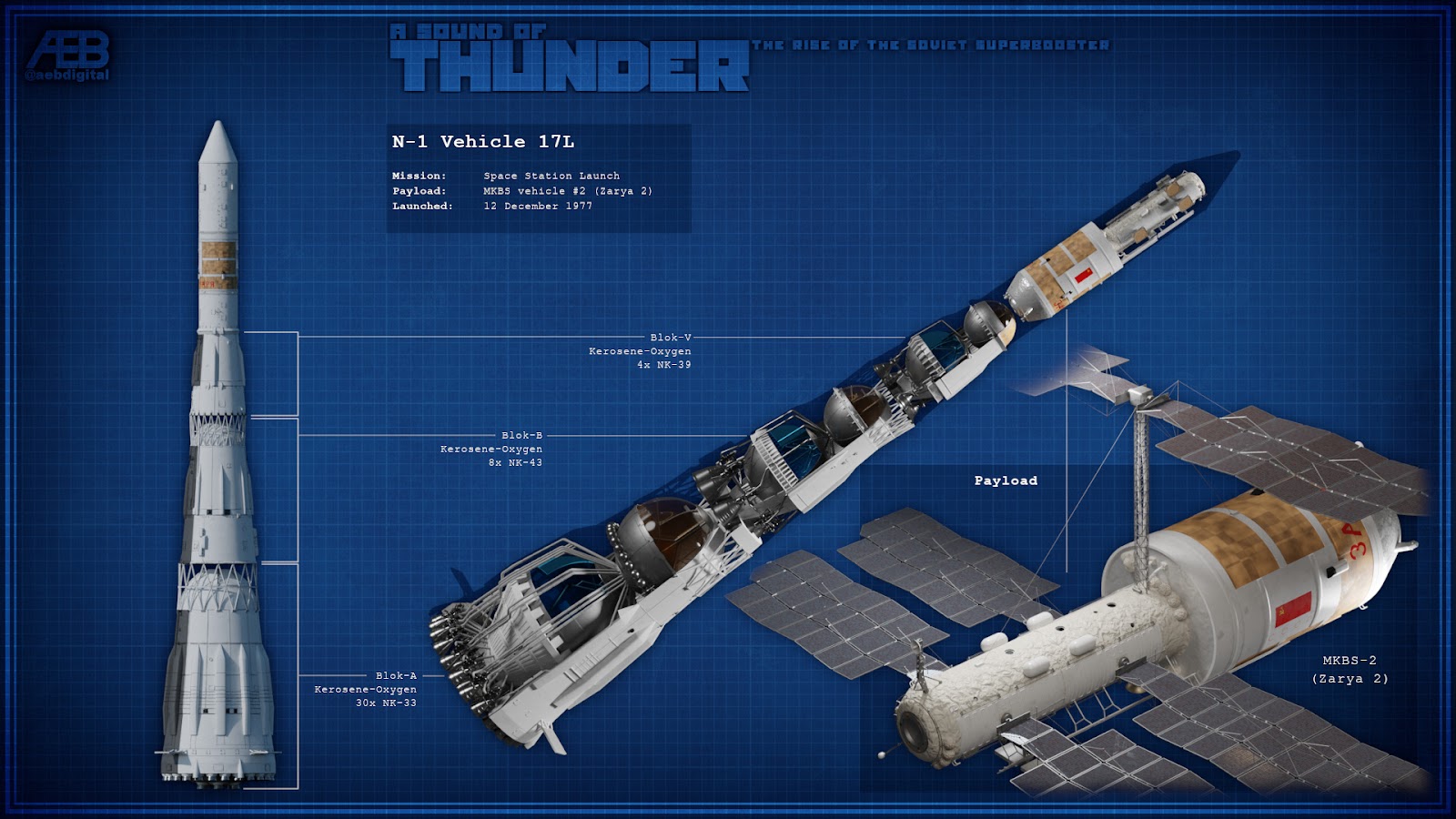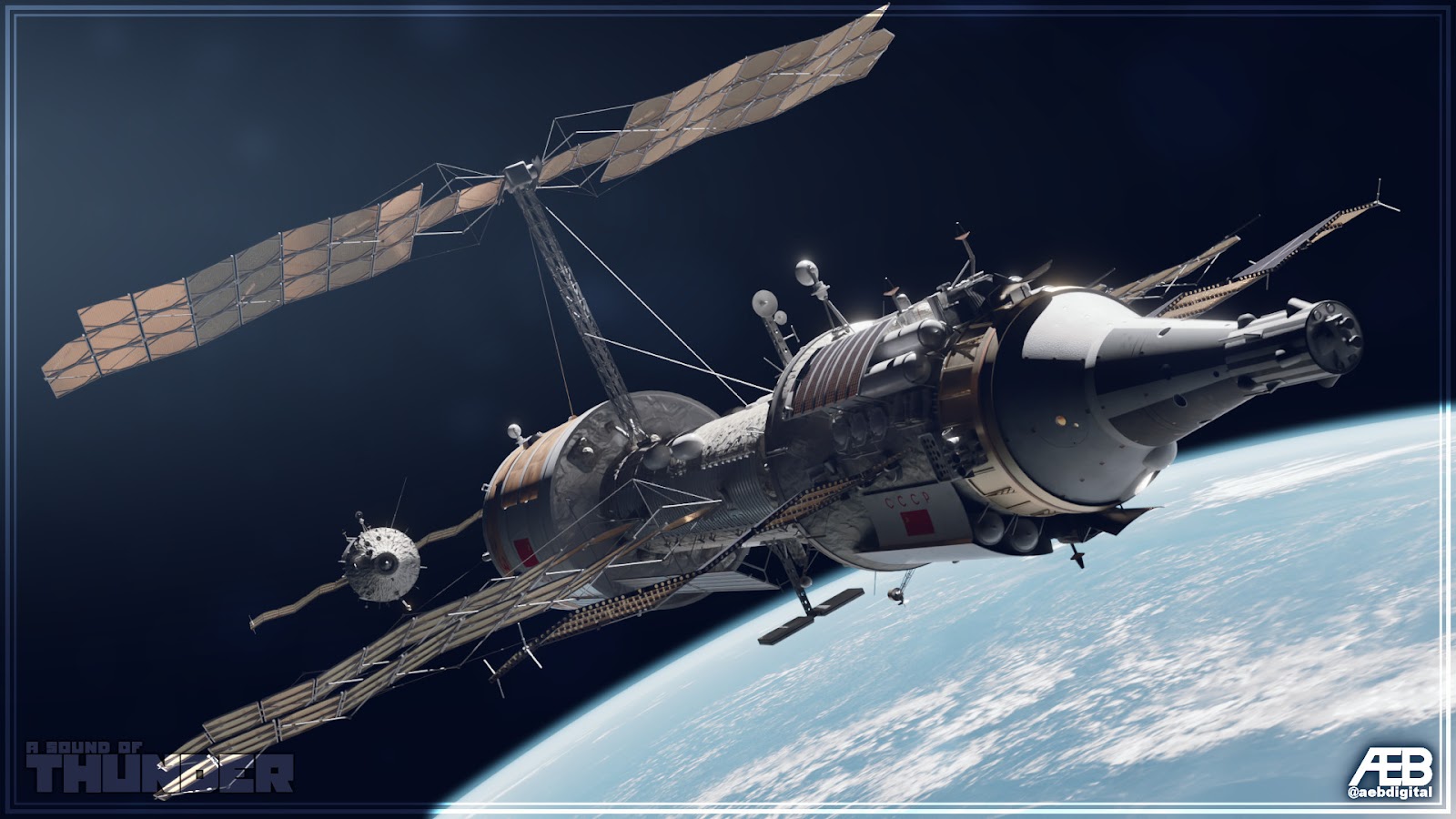Post 11: Red Sky in Morning
“What moved the Politburo was the thought that the Muslim revolution in Afghanistan could succeed and that, as a result, the Soviet Unon would actually be thrown out of Afghanistan. The repercussions of such a blow to our prestige would be unpredictable. The Soviet Union could not run such a risk. The Politburo was determined to show that the Soviet Union would not be pushed about.”
- Vladimir Kuzichkin, “Coups and Killings in Kabul: A KGB defector tells how Afghanistan became Brezhnev’s Vietnam”, published in Time Magazine, 22 November 1982.
++++++++++++++++++++
Following his takeover of NPO Energomash in September 1973, Valentin Glushko found that he had inherited a well-organised and extremely competent bureau from Vladimir Chelomei. Setting aside Chelomei’s justified reputation for delivering late, the programmes themselves were technically sound, and Glushko found little to complain about in the status of the Phase 1 Almaz space station project. In addition to Orbital Piloted Station number 1, which was already in orbit as the Almaz space station, OPS 2 and 3 were already at an advanced stage of preparation. OPS numbers 4 and 5, currently under construction at the Khrunichev factory in Fili, already incorporated a number of improvements planned for Phase 2, including a second docking port that would allow the stations to be re-supplied on orbit, and provided the opportunity to keep a crew aboard for the entire lifetime of the station. After a long and painful development, the advanced radar system for the stations was finally being installed in OPS 4, promising a big improvement in the station’s ability to track US naval movements from orbit.
This plan was disrupted - in a positive way, from Glushko’s point of view - by the September 1974 decree reassigning work on the large MKBS stations from Mishin to NPO Energomash. In response to this decree, the MKBS hulls already produced by TsKBEM (except for the one destined to become Zarya) were transferred to Energomash. Two of these hulls were in an advanced stage of assembly, and would provide the basis of Energomash’s first flight model, plus a spare. Later core modules would be manufactured in-house by Energomash at Fili, along with specialised add-on modules based upon OPS or TKS modules. However, several critical components still needed several years of development, the most significant of which was the EyARD 1 nuclear reactor.
In development since the mid-1960s as a power source for nuclear electric propulsion, the EYaRD was designed to provide more than 50kW of electrical power to the station over a period of at least five years. This was five times as powerful as the BES-5 reactor already flying on the US-A series of radar reconnaissance satellites, and would be needed to power the exotic laser and particle beam experiments that the Defence Ministry wanted to demonstrate. Glushko estimated at least five more years would be needed to bring the EyARD to the necessary level of maturity for flight and so, to avoid a lengthy delay in resuming crewed space station missions, Energomash’s first MKBS core would rely on solar power, just as TsKBEM’s first Zarya had. Most of the payloads originally planned for OPS-4 would be transferred to MKBS-2, with the OPS propulsion system also adapted for use on MKBS. As had been planned for the Phase 2 OPS stations, a second docking port was included, allowing for continuous crewing of the station.
The successful return of the crew of Soyuz 20 from the Almaz 3 space station in July 1976 marked the completion of Phase 1 of the Almaz project. It also marked the final use of Soyuz as a ferry vehicle, which despite giving sterling service, had constrained the Almaz missions with the small volume of supplies that could be carried for each expedition. Mishin had offered to develop an automated supply ship derived from Soyuz, but Glushko rejected this in favour of moving forward with his own, more capable vehicle. The next phase of the Almaz project would see crews launching aboard Chelomei’s Transport and Supply Ship (TKS), which combined a small, conical Return Vehicle (VA) with a large Functional Cargo Block (FGB). Closely resembling the Apollo Command Module in shape, the VA was an evolution of Chelomei’s earlier proposed LK-1 lunar flyby ship, and was able to generate a small amount of lift to help steer it on re-entry. The FGB was in many ways a small space station in its own right, providing propulsion, power, crew support systems and cargo for missions of up to four months.
The TKS design was already well advanced by the time Glushko replaced Chelomei. The new Chief Designer made minimal changes to the vehicle, focusing instead on redesigning MKBS and development of his new RLA family of launchers. Development of the TKS therefore continued more-or-less uninterrupted after the creation of NPO Energomesh.
The first flight tests of TKS hardware came in May 1976, with the uncrewed launch of two VA capsules by a Proton-K rocket on mission LVI 1. The capsules entered orbit and separated, being identified as Kosmos 821 and 822 in the launch announcement. After a short stay in orbit, they were commanded to re-enter the atmosphere, and both capsules landed successfully in the Kirghiz SSR.
A second uncrewed test, LVI 2, was launched in September 1976, but was not quite as successful, with an electrical fault causing a failure in the guidance system of one of the two vehicles (Kosmos 859), which caused it to fail to initiate de-orbit on the first attempt. A second attempt one orbit later succeeded, with the vehicle coming down in the Russian Far East. Recovery teams took three days to locate the wayward capsule, but once found it appeared to be in good condition.
With two successful uncrewed missions completed, the next flight was more ambitious. This time the bottom VA of the stack would be VA #009, which had flown on the LVI 1 mission, marking the first demonstration of reusability for a crewed space vehicle. However, the most significant change for LVI 3 was the inclusion in VA #102 of cosmonaut Anatoli Berezovoi for the first crewed test of the TKS system.
Although the VA module was designed to carry up to three cosmonauts (all wearing pressure suits, in contrast to the practice of using simple flight suits on Soyuz), the loss of Komarov on Soyuz 1 cast a long shadow, and it was decided that this first mission would carry a single cosmonaut. Positioned at the top of the stack, Berezovoi’s VA module was attached to the SAS launch abort tower, which had been extensively tested with the VA over the past few years, and was based upon the system successfully used on the early L1/Zond missions, so confidence for the launch phase was high.
The inclusion of a cosmonaut meant that a Kosmos designation was not appropriate, and so a name needed to be found for the spacecraft to put in the TASS press release. Breaking from Chelomei’s practice of naming craft for precious stones, Glushko chose a more patriotic, politically pleasing name for the VA, and by extension, the whole TKS: Slava (Glory)[1].
After an aborted countdown the previous day, Slava 1 was launched on 8th February 1977. Both VA capsules were successfully placed in a low Earth orbit with an average altitude of 210 km. Berezovoi reported no problems as he monitored the automatic operation of his spacecraft. Without the spacious FGB module, the VA capsule would have been claustrophobic for the nominal crew of three, but as the sole occupant Berezovy found it acceptable. He was able to remove his pressure suit, eat and even sleep briefly in the small cabin.
After 16 orbits of the Earth, Berezovoi once again donned his Sokol pressure suit as the propulsion section of VA #102 fired to de-orbit the capsule. Berezovoi was brought back to Earth within the nominal landing zone after a total mission of just under 25 hours. The uncrewed VA #009 remained in orbit for a further two days before completing its own re-entry and landing, again with no issues.
With the VA and Proton launcher having demonstrated their ability to support crewed missions, the next major milestone was an uncrewed test of the full TKS spacecraft, including both VA and FGB modules. This came just two months later in April 1977, with the launch of Slava 2, which saw the 20-tonne spacecraft complete a number of complex manoeuvres over a 14 day mission before the VA separated and returned to Earth. The FGB remained operating in orbit under ground control for a further three months before being commanded to a destructive re-entry over the Indian Ocean.
On 17th August 1977, the Slava 3 mission launched from Baikonur Site 200. The mission once again consisted of a complete TKS spacecraft, but this time carried a full crew complement of three cosmonauts: Yuri Glazkov, Dimitri Yuyukov, and mission commander Yuri Artyukhin, veteran of the Soyuz 12/Almaz 1 mission. Despite the military nature of the programme, the three-week Slava 3 mission was extensively publicised by the Soviets. With US human spaceflights three years into a hiatus pending the launch of their Space Shuttle, the Soviets were eager to show off their latest achievement in cosmonautics, and the spacious interior of Slava was a clear contrast to recordings of cramped Apollo-era capsules. The test objectives of the Slava 3 mission were also successfully met, with the spacecraft performing well over its extended mission, and the crew returned safely to the motherland on 6th September.

The success of Slava 3 was quickly followed up with the launch of Zarya 2, the second MKBS core. Aside from a change in the colour of its insulating blankets, the most visible changes from Zarya 1 were the “power tower” mast with additional Almaz-derived solar arrays, and the inclusion of large, deployable synthetic aperture radar antennas along the habitation compartment, supplementing the types of optical reconnaissance payloads flown on the Almaz missions. Less obviously, both of the station’s docking ports had been strengthened to support the heavier Slava vehicle, and the internal avionics were upgraded to make use of the new S-650 digital computer, which incorporated many advances developed by Nikolai Pilyugin’s Scientific Research Institute of Automatics and Instrument-Making (NII AP) to support the L3 and L3M lunar programmes. More menacingly, Zarya 2 carried not only a modification of the “Shield 1” self-defence cannon used on the Almaz stations, but a new anti-satellite missile system called “Shield 2”[2]. Four of these radar guided missiles were attached to the Zarya base block in individual canisters, and their 100km estimated range added a considerable offensive capability to the new station.

Zarya 2 entered orbit on 12th December 1977, and was joined in space one week later by Slava 4. Cosmonauts Vladimir Kozelsky, Eduard Stepanov and Valeri Romanov docked with the station on their second day in orbit to begin a three month stay in orbit. Unlike the Slava 3 mission, and despite TASS trumpeting the docking as marking the foundation of the world’s first multi-module space station, the crew of Slava 4 received little publicity, and made only a few television broadcasts. Their focus was instead on commissioning Almaz’s military payloads and demonstrating the effectiveness of their radar payload. In this they were largely successful, with the Almaz radar demonstrating a marked improvement in quality over the US-A data, but the mission once again called into question the necessity of carrying a crew. Almost all of the advantages of Zarya were due to its greater size and power, not due to the presence of humans aboard. The crew did perform a number of valuable scientific experiments during their stay, but in terms of an operational military capability, it seemed that uncrewed systems had the advantage.
Perhaps the most significant event of Zarya 2’s mission was the docking of Slava 5 on 5th March 1978. Despite another failure of the notoriously unreliable Igla rendezvous system, Slava 5 commander Valeri Makrushin was able to guide the 20 tonne spacecraft to a manual docking at Zarya’s aft port. This marked the first joining in orbit of three crewed space vehicles, and matched the Apollo-Soyuz record of six for the maximum number of people in a docked spacecraft. The two Slava crews remained in orbit together for five days before Kozelsky, Stepanov and Romanov entered the Slava 4 return capsule and separated from the FGB cargo block to return to Earth.

In a test of the new vehicles’ capabilities, the Slava 4 FGB remained docked at the station for a further 2 weeks. Makrushin and his crewmates, Gennady Sarafanov and Leonid Kizim, transferred a number of ongoing experiments from the FGB to the Zarya base block, before filling the module with empty containers and other trash. On 19th April, as part of an experiment to maximise Zarya’s operational life, Slava 4’s propulsion system was fired to raise the station’s orbit. This successfully demonstrated the re-boost capability that would be vital in preserving the base block’s limited propellant supply. For future stations Glushko was planning modifications to both MKBS and TKS to allow in-space propellant transfers, but in the meantime Zarya 2 was dependent upon the reserves it had been launched with, plus the engines of visiting Slava spacecraft.
The Slava 4 FGB undocked upon ground command on 25th April, but remained in orbit for another month before finally being commanded to destructive re-entry in late May. The crew of Slava 5 were relieved in June by Slava 6, and the chain of missions would continue until the return of Slava 8 in May 1979. After the departure of the crew, the Zarya 2/Slava 8 FGB complex remained in orbit, and it was in this period that the Shield 2 missiles were tested.
On 8th September 1979, the Slava 8 FGB undocked and was moved to an orbit almost 50km lower than Zarya 2. On 15th September, as the two spacecraft approached the closest points of their respective orbits, one of the Shield-2 missiles was fired from Zarya. The missile crippled the FGB, and generated a large amount of debris that was quickly picked up by NORAD in the United States. The incident sparked little public discussion at the time, with most of the press taking the Soviet’s cover story of a technical failure of the Slava 8 module at face value, but it developed into a significant scandal in early 1980 when the FGB made an uncontrolled re-entry over Canada in January. Several pieces of the large spacecraft reached the ground, including propellant tanks containing highly toxic dinitrogen tetraoxide and unsymmetrical dimethylhydrazine, which contaminated an area of forest close to Armstrong, Ontario[3].
The Canadian government billed the Soviets CA$4 million for clean up operations under the 1972 Space Liability Convention, while the US condemned the use of weapons in space that had led to the incident. The Soviets continued to publicly deny that any weapons had been involved, but they eventually paid CA$2 million to Canada. Despite the cover story, and coming at a time of heightened tensions over the Soviet invasion of Afghanistan, the American defence and intelligence communities took grim note of the development of this new weapon, and began pressing their own plans with greater urgency.
The final crewed mission to Zarya 2 was that of Slava 9 in March 1980. With the station slated to be replaced by Zarya 3 in the coming year, the Slava 9 mission largely focussed on closing out long-running experiments in plant growth and metallurgie, but with tensions with the US still high it also conducted operational military surveillance missions, with a focus on optical observations of Afghanistan and radar observations of US fleet movements in the Indian Ocean and Mediterranean. The Slava 9 mission ended with the VA capsule’s return in late June, with the FGB remaining with the station until the destructive re-entry of the whole complex over the Pacific in September 1980.
Over more than two years in orbit, Zarya 2 had proved impressive but controversial. Its achievements in extending the duration of crewed missions, and in particular its demonstration of continuous crewing over multiple missions, had won admiration. However, this was largely overshadowed by concerns over its offensive capabilities, with parts of the Western media calling the station “Battlestar Zarya” and questioning whether the skies would be safe for American astronauts when the Shuttle commenced operations. As the Cold War was entering its chilliest and most dangerous phase on the ground, it seemed that the detente in space that had been opened by the Apollo-Soyuz Test Project was now definitively over, as both superpowers debuted new vehicles and capabilities for the new decade.
++++++++++++++++++++
[1] Not to be confused with the 3-ship (now 2…) class of Project 1164 “Atlant”
naval cruisers, which IOTL have the NATO reporting name “Slava” (taken from the name of the first ship of the class, which was launched in 1979). For this reason, I considered using a different name for TKS, which never got a proper name IOTL (though it was sometimes referred to as “Heavy Cosmos” in the West). However, the word “Slava” is almost ubiquitous in Soviet era propaganda posters, and fits the political mood of the time. Most importantly, it passed the “smell test” by being independently proposed by a Russian friend, so I decided to stick with it.
[2]
Shield 2 was a real weapon planned for the unflown OPS-4 IOTL.
[3] This parallels the OTL
Kosmos 954 incident, which has been butterflied away ITTL.